Reviews
Ridley Scott
UK, 1979
Credits
Posted on 30 October 2005
Source 20th Century Fox DVD (1979 Theatrical Cut)
Related articles
Features: 31 Days of Horror
Categories 31 Days of Horror
Deep in the fringes of space, the crew of a commercial mining spaceship named the Nostromo are awakened from their lengthy hibernation by a transmission from an unknown source. Contractually obligated to investigate any signs of life, the crew lands on the remote planet where the signal originates from. While exploring the surface for the signal’s source the search party discovers a vast nest, and an adventurous crewmember named Kane is attacked by a strange creature that was contained within a large pod he was prying into, which then wraps itself around his face. Kane is brought back to the ship by his fellow crewmembers, but the removal of the creature proves to be complicated, if not impossible. Once back on the Nostromo, the creature suddenly and inexplicably removes itself from its host and Kane is revived once more. Relieved and weary, the crew decides to enjoy one last meal before returning to their space-slumber. Unfortunately, their final supper is decimated by the discovery that Kane unknowingly contains cargo of his own; another alien — presumably the progeny of the initial creature — that turns out to be far more threatening and destructive than the first parasite.
In many ways Ridley Scott’s Alien acts as a lesson in how effective contrast can be in filmmaking. As with so many other great horror films, Alien achieves its objective by blending genres, or at least finding a new setting for its suspense. Scott’s second feature film takes the haunted-house horror picture into the cold, distant, emptiness of space to merge with the science-fiction film. The basic premise of the film is not as evolved as its execution, since it is essentially a retread of territory Howard Hawks once explored. However, Scott’s Alien invites the viewer to compare the film’s various features, including its atmosphere, tone, and characters, either to its cinematic predecessors or to aspects isolated within the film, because the results of its mixture are unsettling in their novelty.
Alien also exemplifies how terrifying the ambiguity created by amalgamation can be for humanity. Scott’s creation functions as a study of how threatening biological and technological evolution may be and exposes how fragile the human race is when confronted with an organism focused solely upon survival and unconcerned with the progress of civilization. It’s a frightening view of a future that doesn’t require the presence of human life, but it’s even more disturbing once we comprehend we’ve contributed to rendering ourselves obsolete.
Though he may lack a visual signature, Scott’s filmmaking methods in Alien are certainly unlike the approach he applies in his more recent work. Watching Alien today, it is astonishing how patient and course the film feels compared to Scott’s current Hollywood gloss. In fact, the disparity in style between his early films and his latest efforts is utterly peculiar. Perhaps his early style is a product of the time period, displaying his ingenuity at maneuvering around the creative constraints inherent to these earlier sci-fi films. It’s also possible that Scott’s early technique was determined by his influences at the time. Thus, Alien’s ambiance and mood can be understood by Scott’s acknowledgment that his film was influenced by The Texas Chainsaw Massacre as much as by 2001: A Space Odyssey.
Whatever the cause, Scott’s stylistic restraint permits Alien to maintain its dreadful atmosphere and prevents the film from feeling completely antiquated. Unlike the grand visual spectacle of Star Wars, Scott seems uninterested in creating vibrant visuals and appears more enamored with minimalism. Scott’s captivation with simplicity is best displayed during his exploration of space, whether interior of exterior. In the film’s opening moments we venture inside the hulking spaceship only to patiently peer into its empty rooms and corridors. Scott slowly sweeps through a chillingly silent ship making sure we understand its enormity as well as its restrictive nature, quietly establishing a cold, eerie, inhuman atmosphere of distress that will linger through his film. Scott’s minimalist approach is also displayed by long stretches of action with little to no dialogue, with only basic filmmaking language creating his tension and straining our nerves. Of course, with some help from Jerry Goldsmith’s wind-instruments, Scott will continue to build this tone until its breaking point towards the end of his film. At this point Scott makes no apologies for descending into a sensory assault involving a fury of light and sound, applying strobe lights, flashing color, irritating voices, and deafening noise. Scott will bounce between opposing techniques throughout Alien. His method is most blatant during the exploration of the alien nest, where a close-up of a frantic attack upon Kane is only answered by a desolate establishing shot, absorbed by cold hollowing winds that only draw more attention to the crew’s isolation. In fact, throughout Alien Scott alternates between stark compositions of the barren, uninviting, landscapes of space and the cluttered claustrophobic interiors of the Nostromo, both of which are cast in darkness.
The darkness also serves to obscure H.R. Giger’s alien design, which Scott wisely limits mostly to shadows and glimpses. However, the few images of the alien that are provided illustrate a great deal about our apprehension regarding the uncertainty of evolution, especially regarding gender roles. While the adult alien appears relatively androgynous (in the sequels we find out it is female), it’s a classification based mostly upon the ambiguity of the alien’s most prominent characteristic—its large skull. The enormous head of the alien is quite noticeably phallic in its shape, with a potent protruding inner mouth that possesses such strength that it rips through its victims’ bodies when exposed. However, the mouth of the beast itself has a vaginal resemblance that drips a clear wet slime whenever preparing to attack its prey. It’s a terrifying blend of suggestive imagery, especially when we are allowed a close-up at the ravenous beast.
The other unsettling characteristic of the alien is its ambiguous structure. As the crew’s science officer Ash mentions, the creature “[sheds] its cells and [replaces] them with polarized silicone,” which implies the alien is some strange combination of organic tissue and metallic machinery. Furthermore, a corrosive acidic substance pumps through the creature’s veins, presumably an action could only be possible within a metallic compound. Indeed, the beast’s body type is shiny, slippery, smooth and sleek like a metal, which allows it to conceal itself within the ship’s interiors. Not only does this biological trait enhance the species, but it also serves to keep us in a constant state of anxiety as to where the alien lurks, thus making Scott’s concealing steam and negative space all the more frightening. The fear of the alien’s mechanic traits is but one illustration of Alien’s strange conception of technology and machinery. Though the Nostromos is obviously sophisticated enough to allow humans to travel into the outer regions of space and is apparently guided by an advanced form of computer intelligence, the crew’s superior technology continues to fail them at the most inappropriate times. Numerous forms of technology frustrate the crew, including the ship itself when it explodes during landing, as well as tracking system that leads to the demise of a crewmember. Just as unsettling is the creation of an android that perfectly mimics a human, but that eventually betrays their interests.
In some ways the alien also resembles a human, with arms and hands much like any primate. It is this last aspect that might make the creature most disturbing, since it hints that the alien is an enhancement of the human form and it shares not only our basic traits, but possibly a fragment of our genetic code, and yet it does not respect us. It’s a disconcerting resemblance that Scott subtly suggests by including close-ups of human hands gripping and climbing, which is then contrasted to the long black fingers of the alien that Scott lingers upon during the film’s finale.
Still, equally troubling is that the alien takes on such a foreign form that is so distinctly inhumane and merciless. These qualities are best represented in the fact that the alien does not appear to have eyes and thus appears particularly soulless. Also, intriguing is that the alien does not prey upon humans for nourishment, but totally as a potential host or threat. Thus, the alien is both physically and genetically advanced, but primal in its instincts. As Ash points out, he considers it to be a “perfect organism” with a “structural perfection matched only by its hostility.” Ash, who turns out to be a deceptive android, admires the alien’s “purity”, calling it a “survivor, unclouded by conscience, remorse, or delusions of morality.” That this praise for a living organism that has integrated machinery into its body comes from a cruel android that has been shaped to mimic the human form, is particularly distressing in its implication that the human form has suddenly been superseded. It’s in this type of union between conflicting notions of flesh and machinery and the blurring of gender boundaries that Alien is able to permeate such tension and terror.
Part of our anxiety is based upon the alien’s aggressive sexual nature. During the initial meeting between Kane and the alien, a primitive form of mating occurs, whereby the pod which encases the arthropod-like creature throbs, glows, and blooms to entice Kane’s curiosity only to pounce upon the unsuspecting prey. At this point the creature clutches Kane’s face, wraps its slithering tail around his neck, and penetrates his throat to deposits its seed in his chest, in a series of actions that serve as the creature’s form of copulation (in Jeunet’s Alien: Resurrection the adult alien and Ripley explore their own sexual relationship). Later, when crew captain Dallas descends down a tunnel to flush the alien out of hiding, he regrettably finds himself falling into the monster’s open-arms, as if the creature was waiting to embrace him all along.
The results of the penetration reveal themselves during the crew’s final dinner, as Kane’s persistent cough turns out to be the alien breaking through his chest cavity. The final moments of the scene have not aged well, since the artificial alien puppet that emerges appears rather humorous as it peers at the crew and scurries across the dinner table. However, the concept of the scene maintains its tension, as we grasp the fact that the alien chose to impregnate a male crewmember. Scott and screen-writer Dan O’Bannon have effectively made Kane the alien’s mother, who has given birth to the child he conceived with the slimy arthropod that penetrated his mouth. Though the alien has always been believed to be a parasite, the birth using a human surrogate may also explain the few human traits the alien possesses. Whatever the case, the scene succeeds in further distorting the margins between the genders.
The violent birth of the alien is a severe contrast to the film’s first serene birth scene. In the opening moments of the film, after Scott dwells in the Nostromo’s dark, cold, quiet corridors, the spaceship’s computer mainframe, dubbed “Mother”, comes to life with a burst of colorful computer imagery. We then peacefully enter a clean white room, where a number of white futuristic beds, which resemble coffins, open their plastic covers to expose six human crewmembers. Each human wears white diapers and are sound sleep. Soon, through a series of calm dissolves, we watch Kane awaken, raise his arm slightly, and rise from his crib with his eyes still closed. It is a tranquil image of birth that will quickly be undercut by Kane’s comments that he “feel[s] dead.” It’s also not an unexpected response given that the “Mother” that gave birth to the crew was an insensitive computer, which we will learn considers its children expendable.
The numb, uncaring “Mother” of the film is just one illustration of the strange stance Alien takes on the idea of the female gender. When filming crewmembers interacting with Mother, Scott uses a medium shot that reduces the size of the human and thus diminishes their authority versus the omnipotence of Mother. However, the room that houses Mother is one of the few instances within the film of a setting with a bright glow that conveys warmth. Unfortunately the crew discovers that Mother will eventually abandon them. While the computer is willing to provide advice and instruction to the crew at its own convenience, Mother is not nurturing or protective of its figurative children. Oddly, even after Mother has discarded the crew, they must attempt to please her. During the film’s conclusion, as the ship begins its self-destruction, the last surviving crewmember, Ripley, pleads with the computer to stop the demolition, announcing “Mother, I’ve turned the cooling unit back on. Mother!” Sadly, Ripley is denied her request by an appropriately remote female voice. Faced with Mother’s refusal, the child can only respond with insults, crying out “you bitch!”
Whatever Alien’s position on maternity, the film takes quite an unfavorable view on femininity. This stance is best illustrated in the view of Lambert, the crew’s most overtly feminine member. During the exploration of the remote planet that the crew lands upon, Lambert is visibly hesitant and fearful, while male crewmember Kane is courageous and brave. However, Lambert’s behavior is not only inferior to the male crewmembers, but also to Ripley’s conduct. After Kane is attacked by the alien, as Dallas and Lambert bring and unconscious Kane back to the ship, Lambert is concerned about Kane’s wellbeing, while Ripley reminds the crew of safety protocol which would not allow a foreign organism onto the ship. Later, as the alien begins slaying the crew, Lambert responds by becoming overly emotional and hysterical, while Ripley remains rational and practical. What makes Ripley capable of sustaining herself is her survival instinct, a quality she shares with the alien, and the attribute that ultimately allows her to escape and conquer the alien. It’s a quality that one could assume Ash would appreciate, though it’s apparent he doesn’t, considering he attempts to kill Ripley with a girly-magazine. It’s a strange struggle between the plastic android and the strong-willed female, conducted with small photographs of naked women surrounding Ash within Scott’s composition. It’s as if Ash has been programmed to perceive women as objects unworthy of consideration.
The Alien franchise has sustained itself as much on the character of Ripley as it has on the alien of its title. Part of the fascination with Ripley is that she represents another form of amalgamation within Alien. Embodied by Sigourney Weaver, Ripley is by no means an androgynous character. In fact at the start of the film’s climax, after she disrobes, it’s quite clear Ripley is a striking representation of the female gender. As well Weaver does convey just enough sensitivity and vulnerability to prevent us from declaring Ripley as some form machine. However, Weaver is also a faintly masculine presence, considering her muscular physique and boney facial features. More interesting perhaps is that Ripley must become somewhat less human during the film’s climax in order to combat the alien face-to-face. Though Ripley doesn’t have to literally adopt a mechanic persona, as she does later on during the conclusion of James Cameron’s Aliens, Scott does require Ripley to climb into a protective space suit and distance herself from her vulnerable human form.
The Alien franchise receives a great deal of attention for its empowerment of its central female character. Its praise is completely justified, but Scott’s Alien is actually fairly equitable to all of its minority characters. Quite clearly it is the minority characters that survive until the film’s final act, with Ripley accompanied by Lambert, a frail female, and Parker, a defiant Black man. However, there is a clear conflict between social classes within the film, as the two blue-collar workers, Parker and Brett, who are made to toil in the dingy and greasy lower-deck of the Nostromo, continually complain about their share of the proceeds from the excursion. It’s typical to see the lone Black crewmember placed in a lower-class job, but it’s somewhat satisfying watching him last so long. Alas, the same cannot be said for Parker’s compatriot Brett, who sadly serves as the adult alien’s first casualty.
The fear within Alien is not only a consequence of an evolved foreign entity that means us harm, but also from a powerful, uncaring corporate authority willing to sacrifice its employees to attain a better product. Indeed, the unfamiliar alien is just as terrifying as the realization that even our own “Mother” has sold us out in favor of corporate policy and is only concerned with monetary interests. Thus Alien becomes an attack on two different fronts. Considering the economic hardship of the ’70s, and the looming trend towards the increased immigration of foreign workers, who seemingly did not care about American ideals so much as they valued their own survival (however misguided that belief may have been), Alien could be perceived as a manifestation of the growing distrust in American corporate policy.
Alien concludes with Ripley finally defeating the alien and destroying her corporation-infatuated “Mother.” Our female protagonist now finds herself navigating through the emptiness of space alone. Her independence and desire to survival now parallel the plight of the alien she vanquished. Ripley decides to hibernate in the ship’s white coffins so she may recover from the strenuous chaos created by her recent struggles. However, just like so many other instances throughout the film, a strange paradox is created since this decision appears to serve as a return to the womb. Perhaps it’s a consequence of a future so hostile and inhumane that the only action we can take is to sleep once more, living our lives in dreams, just as we did before our birth—before survival became a concern.
More 31 Days of Horror
-

Alien
1979 -
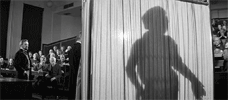
The Elephant Man
1980 -

My Bloody Valentine
1981 -
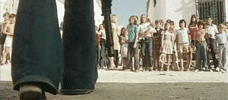
Who Can Kill a Child?
1976 -
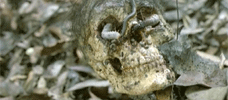
Cannibal Holocaust
1980 -

Let Sleeping Corpses Lie
1974 -

John Carpenter’s Vampires
1998 -

Jaws 2
1978 -

A Warning to the Curious
1972 -

Wolf
1994 -
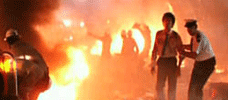
The Survivor
1981 -

Cannibal Ferox
1981 -
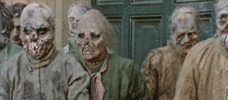
The Nights of Terror
1981 -
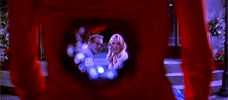
Death Becomes Her
1992 -

Alice, Sweet Alice
1976 -

Body Double
1984 -
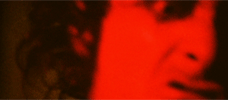
Invocation of My Demon Brother
1969 -
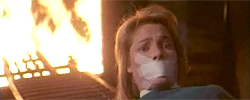
Phantasm II
1988 -

Emanuelle and the Last Cannibals
1977 -

The Wicker Man
1973 -
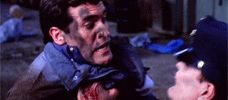
Maniac Cop
1988 -
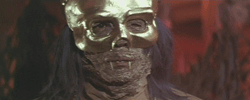
The Legend of the 7 Golden Vampires
1974 -
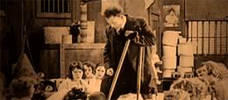
The Penalty
1920 -

Boxing Helena
1993 -

Chew on This
2005 -

Night of the Creeps
1986 -

Night of the Lepus
1972 -

Near Dark
1987 -

Army of Darkness
1992 -
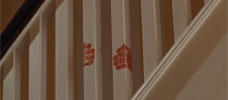
The Brood
1979 -
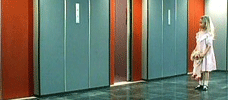
The Lift
1983 -

Amsterdamned
1988 -
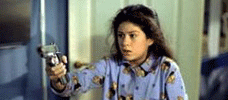
Silent Witness
1999 -

The Shaft
2001
We don’t do comments anymore, but you may contact us here or find us on Twitter or Facebook.



